Curled aluminium ribs envelope Xiqu Centre Chinese opera house in Hong Kong
February 06, 2019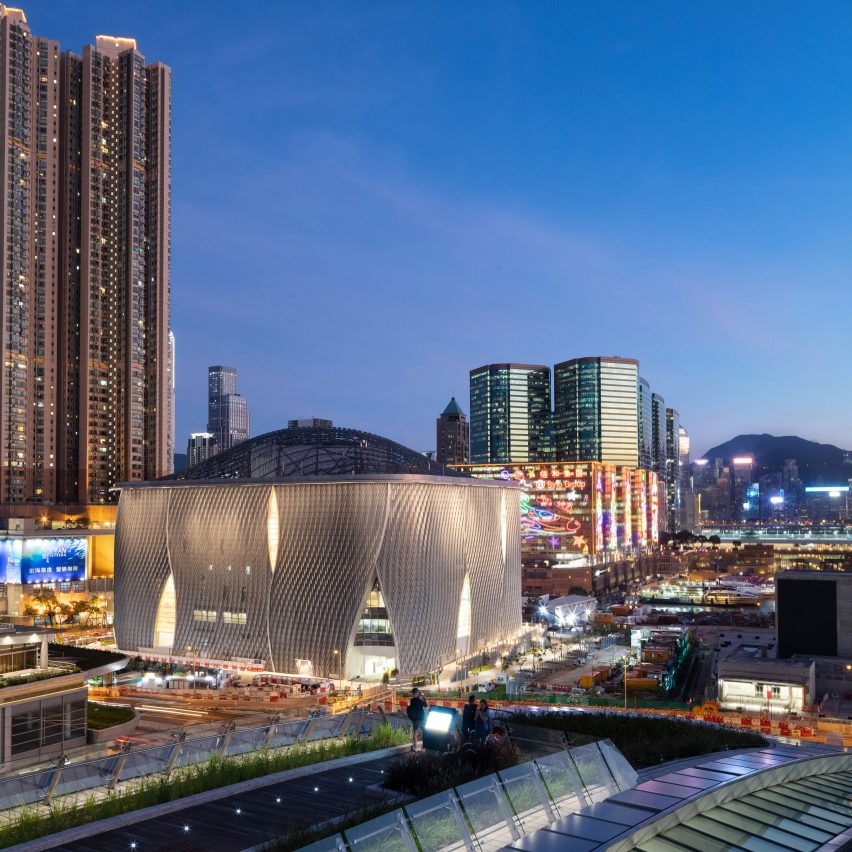
Canadian studio Revery Architecture has completed an opera house in Hong Kong's West Kowloon Cultural District, which is covered in curved aluminium slats arranged in wavy patterns.
Revery Architecture designed the Xiqu Centre in collaboration with local firm Ronald Lu & Partners. It is located in the Kowloon neighbourhood in Hong Kong.
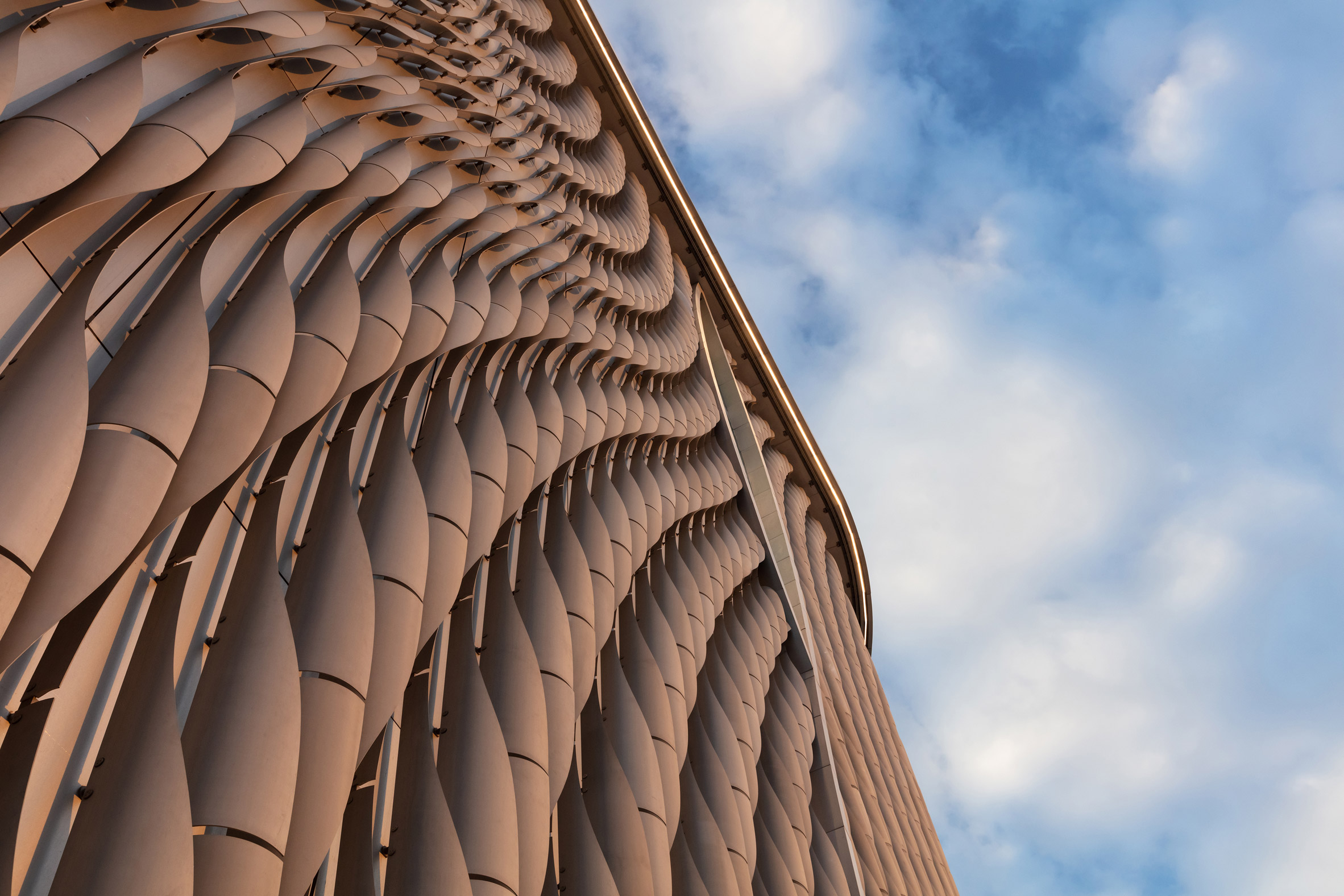
The eight-storey musical complex is the latest addition to the West Kowloon Cultural District on the city's waterfront, which is also home to a train station by Andrew Bromberg and a theatre complex by UNStudio.
"Xiqu Centre is Hong Kong's prestigious new home for traditional Chinese opera and creates a landmark entrance at the gateway to the West Kowloon Cultural District (WKCD), the city's new hub for arts and culture," said Revery Architecture in a project description.
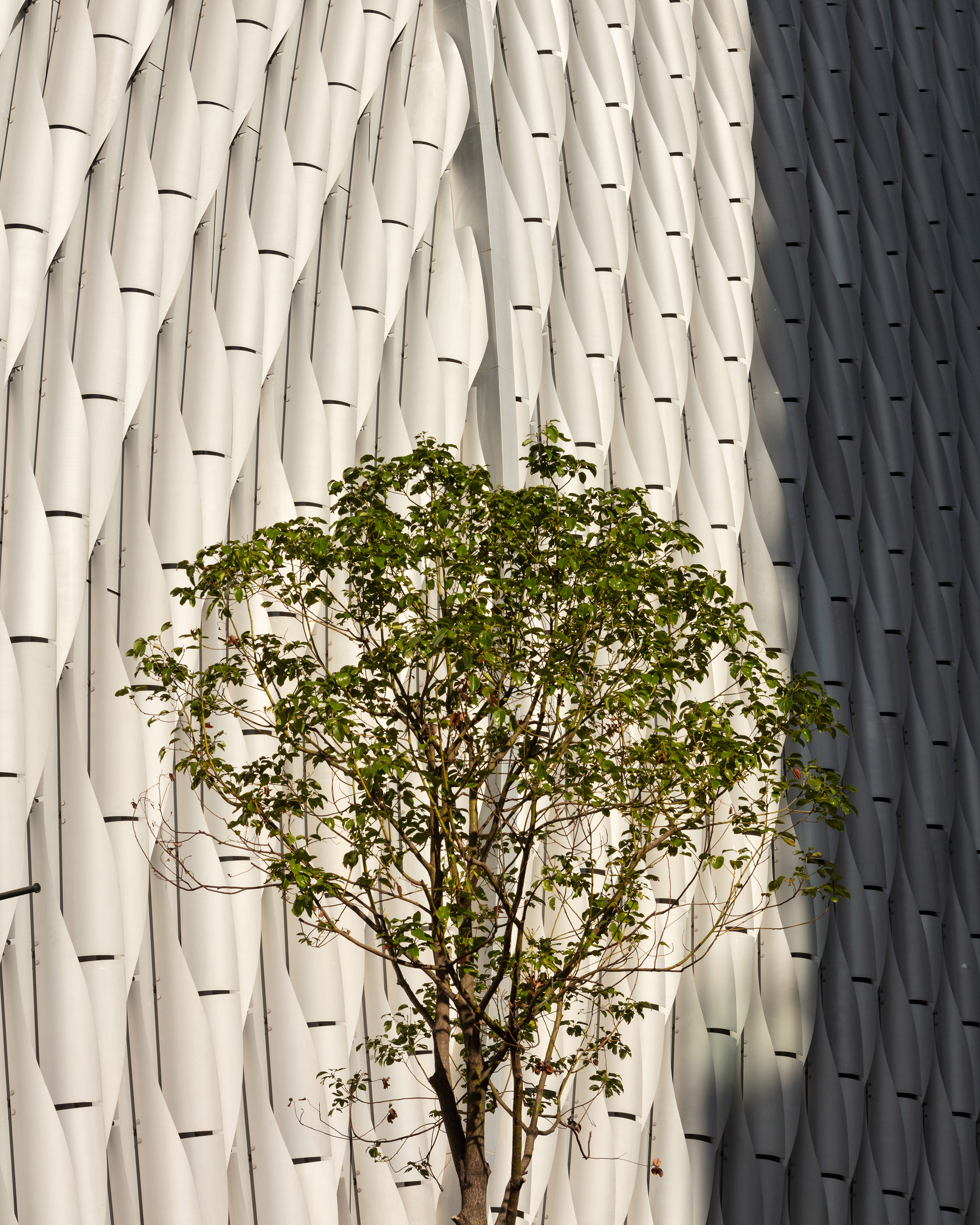
Overlooking the Victoria Harbour, Xiqu Centre has a dramatic facade based on a modular system of curved forms. Each is cut from untreated aluminium using a computer numerically controlled (CNC) machine.
The result is a dynamic, undulating exterior with thousands of wavy slats that resemble fabric, or ripples across the water.
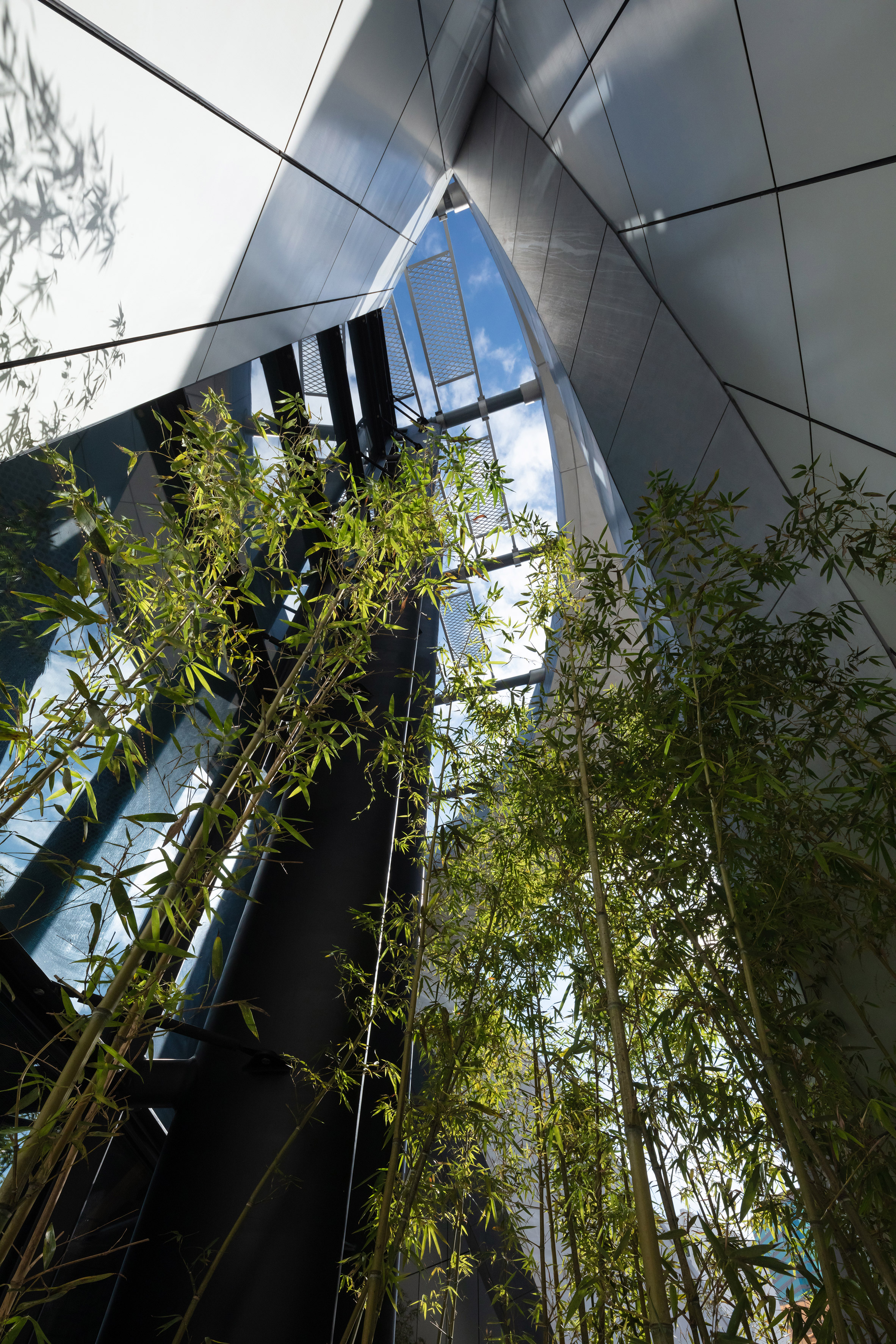
The aluminium forms huge woven panels around the opera house. These gently pull back at each of the four corners in the ground floor to form the entrances to the 320,000-square-foot (29,72- square-metre) cultural complex.
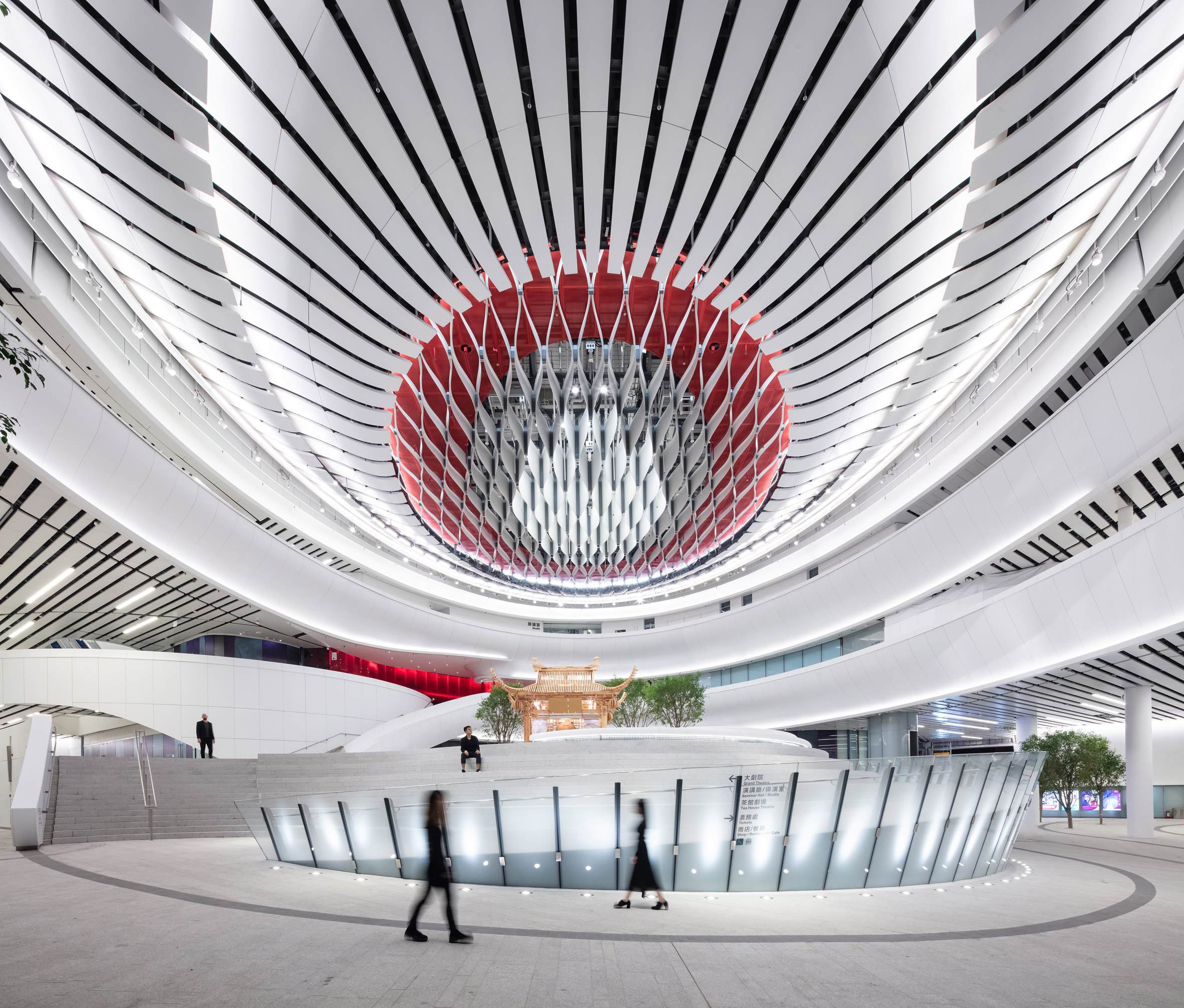
Inside, there is a circular, stark white, multi-height atrium. Hundreds of narrow crevices and gentle folds line the lobby's ceiling and walls, and the multi-level circulation paths that promote a free-flow of people around of the space.
The ceiling reveals the belly of an elevated theatre above, which accommodates 1,073 seats within a dark, dimly lit space that starkly contrasts with the rest of the project. There are additional undulating details on the ceiling, barrier walls and walkways.
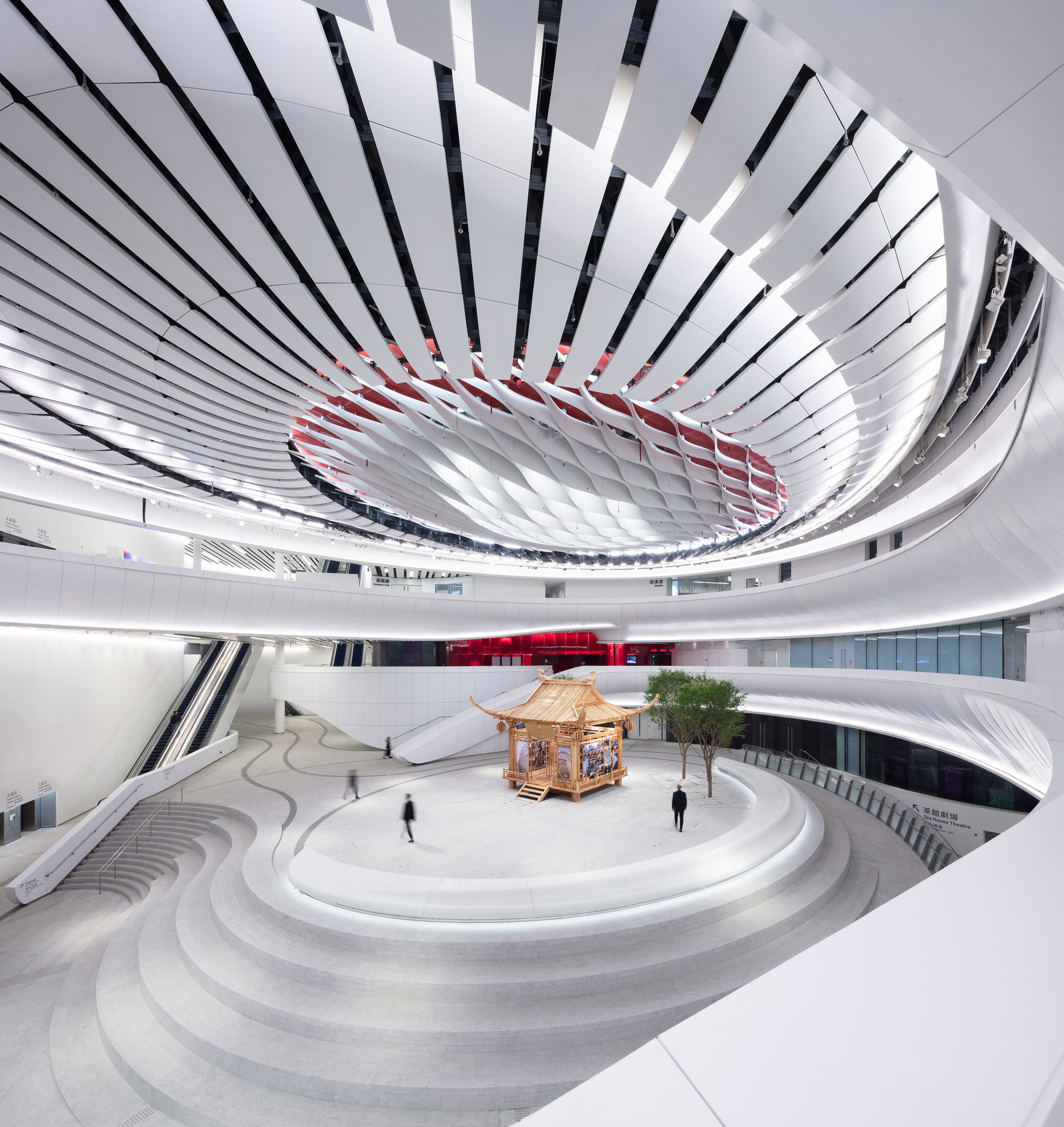
The theatre is lifted 90 feet (27 metres) off the ground to open up the lower levels. The acoustics of the auditorium are further isolated from the urban movement and ambient noise below that surround the site.
Hong Kong's Xiqu Centre is dedicated to promoting the heritage of Xiqu-Chinese opera, the primary genre of indigenous Chinese theatre. The complex also includes a restaurant, a 200-seat theatre, studios, rehearsal spaces, educational and administrative areas, lecture rooms and retail spaces.
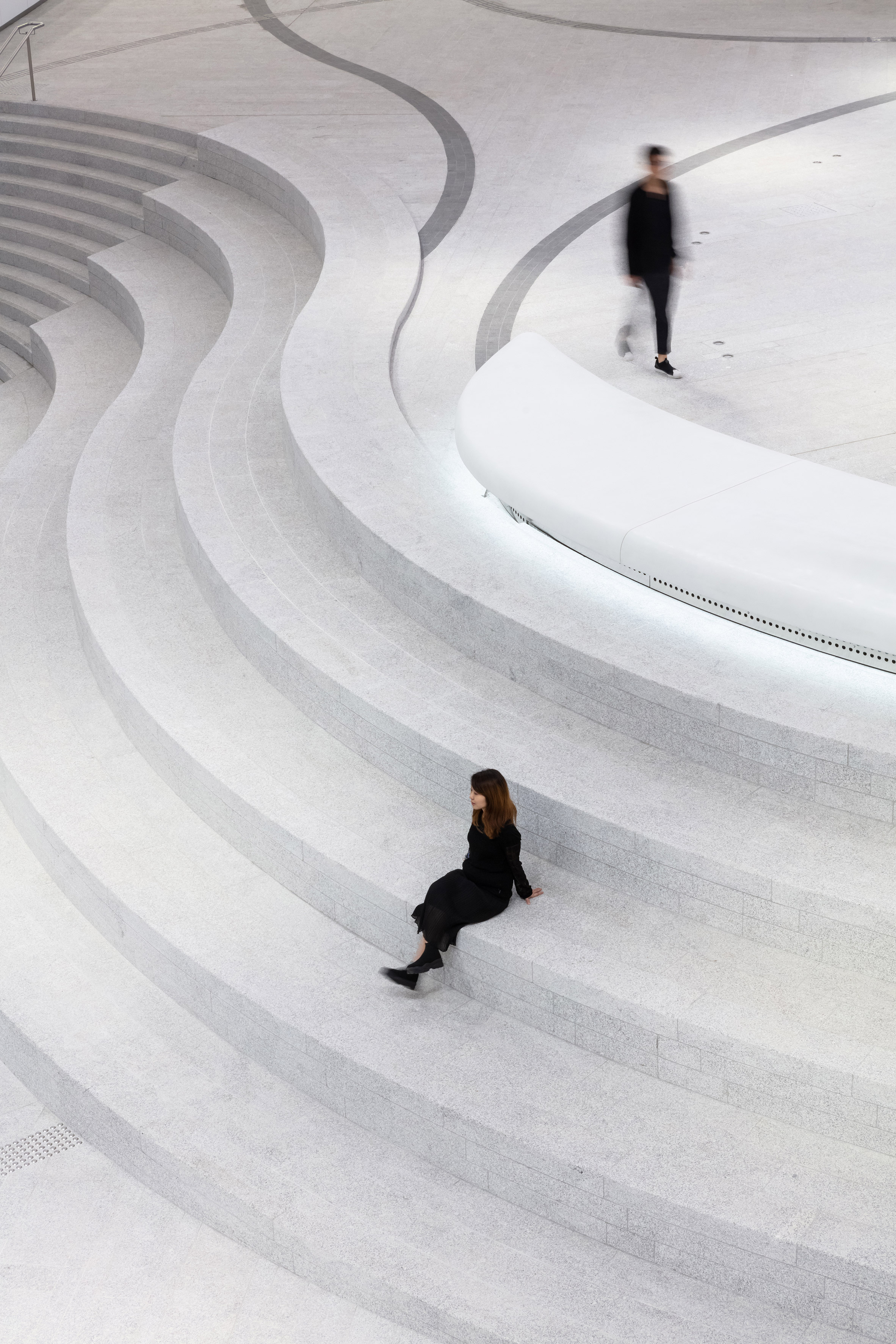
When designing the building, Revery Architecture used four guiding principles. First and foremost was the element of Qi, meaning energy flow and movement, which is expressed via with curvilinear paths and forms throughout.
Landscaping at grade and two rooftop gardens are incorporated into the design in relation to the second principle of nature – a common feature of Chinese opera's traditional outdoor theatrical performances.
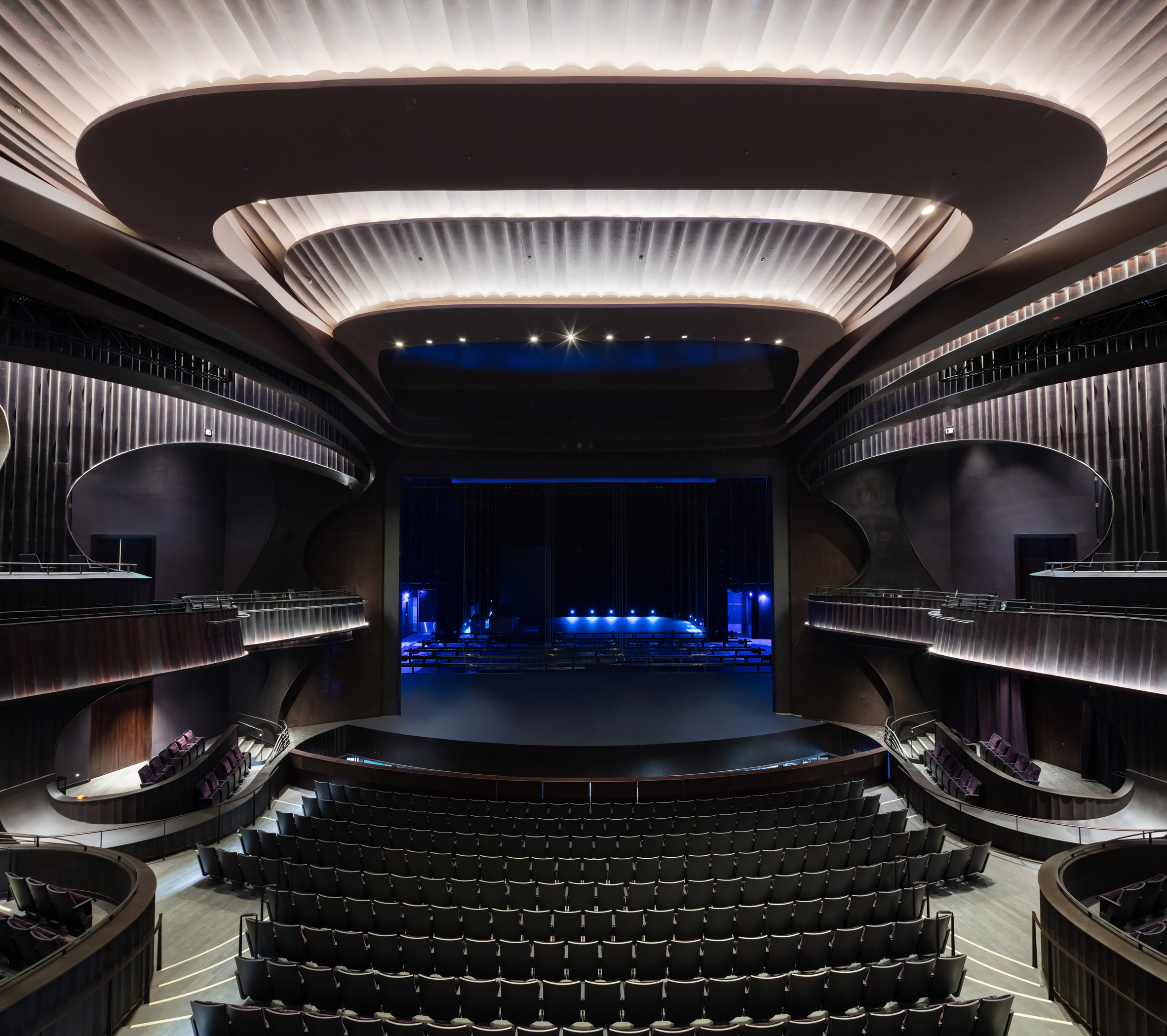
The third factor was the need for a courtyard to China's traditional marketplace heritage. In response, Xiqu Centre has a large, sheltered public plaza as a gathering space.
The concept of the opera house as a gateway or hub provided the final guiding principle and resulted in the building's open, doorless design. Light also emanates from inside the spacious circular atrium.
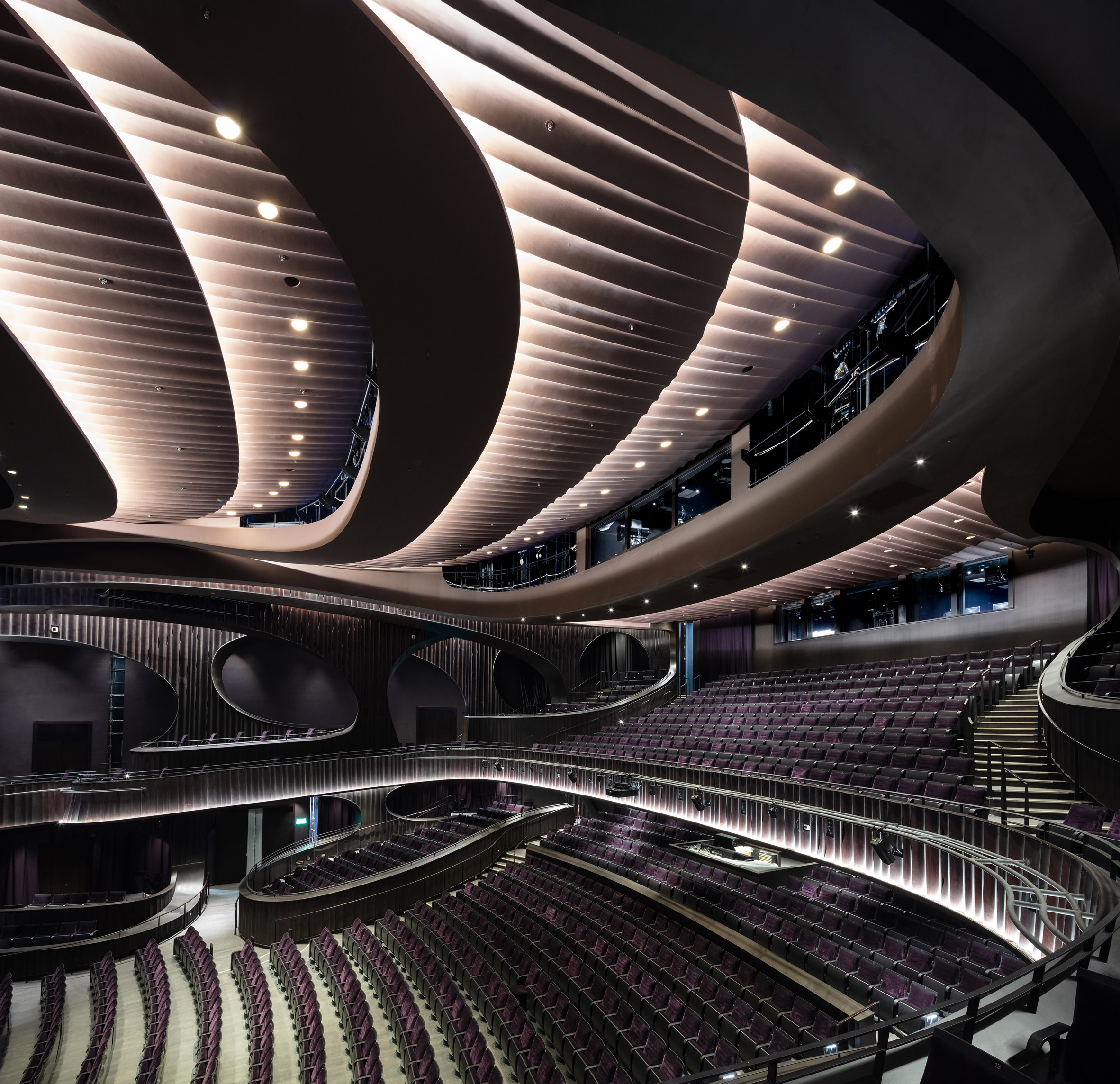
The West Kowloon Cultural District has been in development for more than a decade, following a masterplan by Foster + Partners, with other projects in the complex including the forthcoming M+ museum by Herzog & de Meuron.
Elsewhere in the trendy Kowloon neighbourhood the Eaton Hotel recently opened its second location, following the first, which opened in Washington DC last year.
Photography is by Ema Peter courtesy of Revery Architecture.
The post Curled aluminium ribs envelope Xiqu Centre Chinese opera house in Hong Kong appeared first on Dezeen.
from Dezeen http://bit.ly/2WGFh73
via IFTTT
0 comments